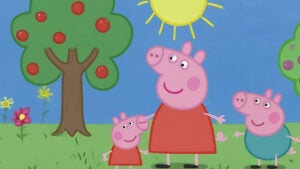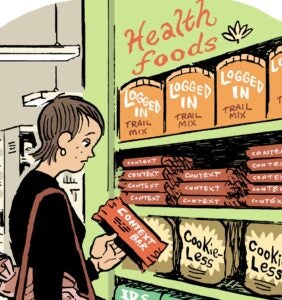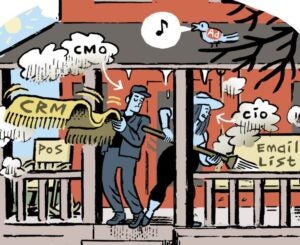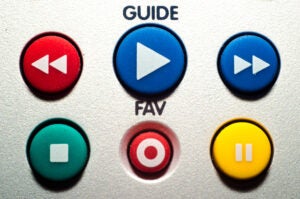 Popular audio-recognition app Shazam, which has amassed 475 million users to date, set its sights on TV Tuesday with the release of a network sales platform called Resonate. Initial launch partners include: A&E, AMC, FUSE and dick clark productions.
Popular audio-recognition app Shazam, which has amassed 475 million users to date, set its sights on TV Tuesday with the release of a network sales platform called Resonate. Initial launch partners include: A&E, AMC, FUSE and dick clark productions.
Kevin McGurn, the company’s chief revenue officer and former SVP of sales for Hulu, said television is one among many diverse technologies and platforms the company is exploring. Another exploratory application is the newly released Shazam for Mac, which extended Shazam’s content discovery credo to the desktop.
The word “Shazam” has become a verb, McGurn said. “We want that verb to be applicable to many things and not just audible media. We’re looking at, ‘What other interesting content can we provide?’ to help advertisers make the most of the Wow moment when consumers connect with media.”
McGurn spoke with AdExchanger about the TV launch and Shazam’s multi-platform future.
AdExchanger: Shazam has been part of the TV viewing experience for some time. Is this the first time you’ve commercialized a product for networks?
KEVIN MCGURN: The main catalyst for why we got into the TV business, originally, was to let users recognize music because they Shazamed it on television. We had seen a number of different activities at certain times of day and our engineers noticed a lot of people Shazaming twice on a Saturday night and it’d be the musical performances on Saturday Night Live.
We’ve been in and around this business quite a bit and Resonate represents a commercialization of what we’ve been experimenting with and developing over the last few years. It marries advertising and programming in an integrated sales solution the networks can control.
Is this something the networks wanted?
A lot of the different applications that had been out there have been either third-party driven or you can look at what the networks have produced themselves, some of the Watch apps or TV Everywhere applications. We’ve been taking a lot of cues from the networks themselves in what they needed. Resonate is the product we’ve come up and the partners are starting to adopt it. We’ve got one Resonate program already under our belts – the Billboard Music Awards sponsored by Chevrolet. Moving forward, we’ve got a series of shows they’re already circling around and approaching the marketplace with and advertisers are raising their hands saying they’re interested.
Many social tv applications have either shuttered or been acquired by Twitter. Is scalability the challenge?
Absolutely. There’s no issue with design or functionality, Shazam just has a massive amount of global reach and here in the US, specifically on the television platform. People are already Shazaming TV, so the behavior is there and that behavior is increasing exponentially year over year. The ability to ride along with what’s already happening. There are plenty of television shows we are organizing Resonate packages for that will [drive] organic Shazams. But as those partnerships form and you get Shazamable moments of calls to action within the programming, it only increases that engagement, raising the value for advertisers, the programmer, the network and engagement across the board for that show and even lengthening the time of tune-in to that show. The more engaged you are and the longer you watch, the more that benefits the networks and the advertiser.
How will the Resonate sales model work?
The design of Resonate is to enable the networks to go out and sell as the primary. We are there for support on the sales side for those networks to help them explain and describe the functions that Shazam provides. As a sales force, Shazam does go out in the marketplace as evangelists. We’re definitely more aligned with the partner or channel sales model, where we want major networks to own the message, their IP, their air and be able to approach advertisers with these opportunities that add value to the packages they’re already in-market selling.
I was at Hulu for the last seven years and worked in and around the broadcast networks quite a bit. Those folks are very near and dear to my heart and Hulu is a very disruptive technology and not just from a consumer standpoint, but from an advertiser’s standpoint. We worked very hard over the years to make sure the networks felt ownership over that sales cycle. I think it was very important when we designed this product that the networks truly felt ownership over that sale and that it was just an enhancement of things they were already putting in the marketplace to increase the value of their deals but also incremental revenue over what they already sell.
Will Shazam take a cut of the network revenue? What metrics will determine the success of a Resonate ad campaign?
We don’t disclose the business models behind it and the costs vary. But the network sets the pricing for Resonate based on the size and length of activation. You can think of major tent-pole events being priced higher than possibly an individual episode within a series. That affords the networks a lot of flexibility to go out and package it through fluidity deals and say, “You can own the second screen for this show in a series and here are the Shazammable moments we’re providing and how many engagements we see and how many we predict in the future” and price it as such and then we get our cut on the back end. It is the commercialization of a second-screen product that the networks really take control of.
How are you determining television ad effectiveness?
We’ve done over 450 ads that were television-enabled and we really hadn’t focused too heavily on the performance from a brand perspective. We were looking more at it from engagement. One of the things we said was we wanted to prove more than engagement and interaction was brand lift. We contacted Nielsen and said, in a perfect world I’d like to look at ads with and without Shazam as well as ads with or without Shazam that have or don’t have music and then look at brand lift over a long period of time.
They had a ton of data on Shazam-enabled advertising and during the course of the study, they compared that history to active advertisers at the time. The ad recall was much higher – 6% – and these are hard needles to move. Likability was a big piece, too. People tend to get a halo effect by putting Shazam in their advertisements.
Do you consider Shazam more of a brand or direct-response play?
You get into the fabric of what the creative community wants to do and impress that brand upon the consumer. Then you also at the same time generate a result that ties to the mobile phone that creates direct-response capabilities and creates a dataset you can retarget. We tie that data to that user on the phone and allow that marketer to be able to reach back out to that user via the mobile phone or Shazam’s media or also on Facebook in their mobile and desktop applications and reengage them. So you can have a retargeting platform directly tied via media recognition to the mobile device and then find them in a mobile or desktop environment and remarket to them after the initial impression.
You’re more than mobile now. Shazam for Mac was just released.
The Mac – the laptop itself – in general is a second screen for the living room. It definitely provides a boost to what we already intended to do with partnerships like Resonate. We’re sort of on this path where we want to replicate the magic we deliver in the world of cinema, in television and in lots of other platforms like radio and retail and live environments. It’s something that will be a never-ending journey for us. We’re looking at what other interesting content we can provide and getting that magical wow moment when someone connects to media through their mobile device when Shazaming. The Mac app is an absolute advancement along that path.
You mentioned retail. Does Shazam foresee any competition coming from Amazon with the Fire Phone and Firefly audio and image recognition?
We absolutely see them as a partner and we do so on many levels, including throughout their devices and applications they provide. Shazam’s goal is to be that magical connection to the world around you that doesn’t just stop with audio recognition. There are lots of different technology and platforms we’re exploring. Fundamentally, the word “Shazam” has become a verb. We want that verb to be applicable to many things and not just audible media. You see a lot of partnerships we’re announcing and taking advantage of all of this behavior that exists in these media environments.














